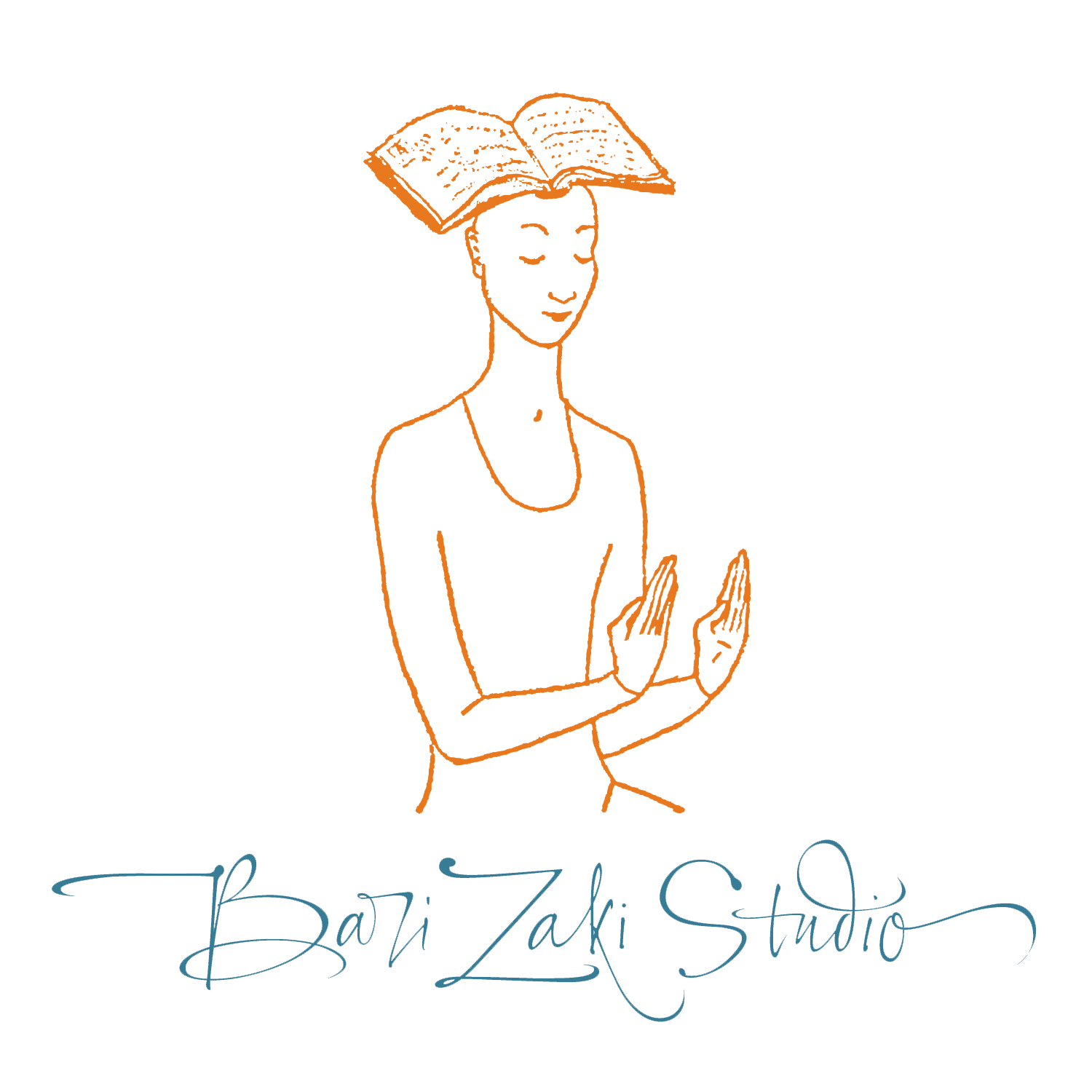Dear Everyone ~
Back in February, I showcased the sketchbooks of my friend
(& working artist & nimble shop assistant) Emmy Kennett.
She never leaves home without a sketchbook, and she had recently made herself
a new buttonhole-stitch one at the studio. Now, she has filled it up …
and has just finished stitching a much thicker, more multi-page sketchbook.
Her vision for it was a bit experimental, so I helped her think it through and
then map out her spine template of 189 pinholes. While I was at it,
I decided to make myself one at the same time.
Mine is still in process, but Emmy’s is already in use.
Emmy filled up her previous sketchbook in about three months,
because it had relatively few pages. She had used Stonehenge 250 gsm (90# Cover).
This time, she wanted more pages, so she selected Hahnemühle Bugra 130 gsm (90# Text),
which she’d used on earlier sketchbooks. Instead of three signatures,
we discussed having a dozen, but then decided that nine would be ambitious enough.
Emmy observed, “I didn’t actually think about whether I wanted the spine to be wide or not.”
Mapping out the pinholes involved some high level bookbinding arithmetic.
The “woven chain” stitching for each signature requires a width of 3/16 inch,
which means that there would be a bit of space between signatures.
Emmy, characteristically, didn’t mind this at all, commenting,
“Years ago, before I’d actually made books or been around bookmaking,
I probably would have cared about the extra space.
But now I know that’s just how it is: It is made exactly how it’s meant to be.
And I know that I probably will use that extra space for taping things into.”
For her cover, Emmy chose luscious Lime Green Saint-Armand.
It’s 100% cotton, very robust, with a lovely fabric-y feel.
Emmy selected three different colours of waxed Irish linen thread (4-ply),
for alternating columns. Her inside stitching also turned out beautifully,
with the colours overlapping.
* * * * *
This past week, I packed up all my supplies to ship ahead to Boston,
where I’ll be teaching next weekend. While I was tying bows on everything,
I spent some time thinking about Emmy’s project and the workshops I’ll be leading.
Whether you are making a book yourself, or having one made to your specifications
(or looking for a readymade one), ultimately the most important aspect
is its usefulness for whatever you hope to do with it.
The pages and cover materials may seem the most obvious criteria,
but other “deciders” include: the feel of the book in your hand;
whether it stays open (if that is important to you);
how durable the cover is — and whether the book fills you with delight.
Bound for Boston,
Bari







